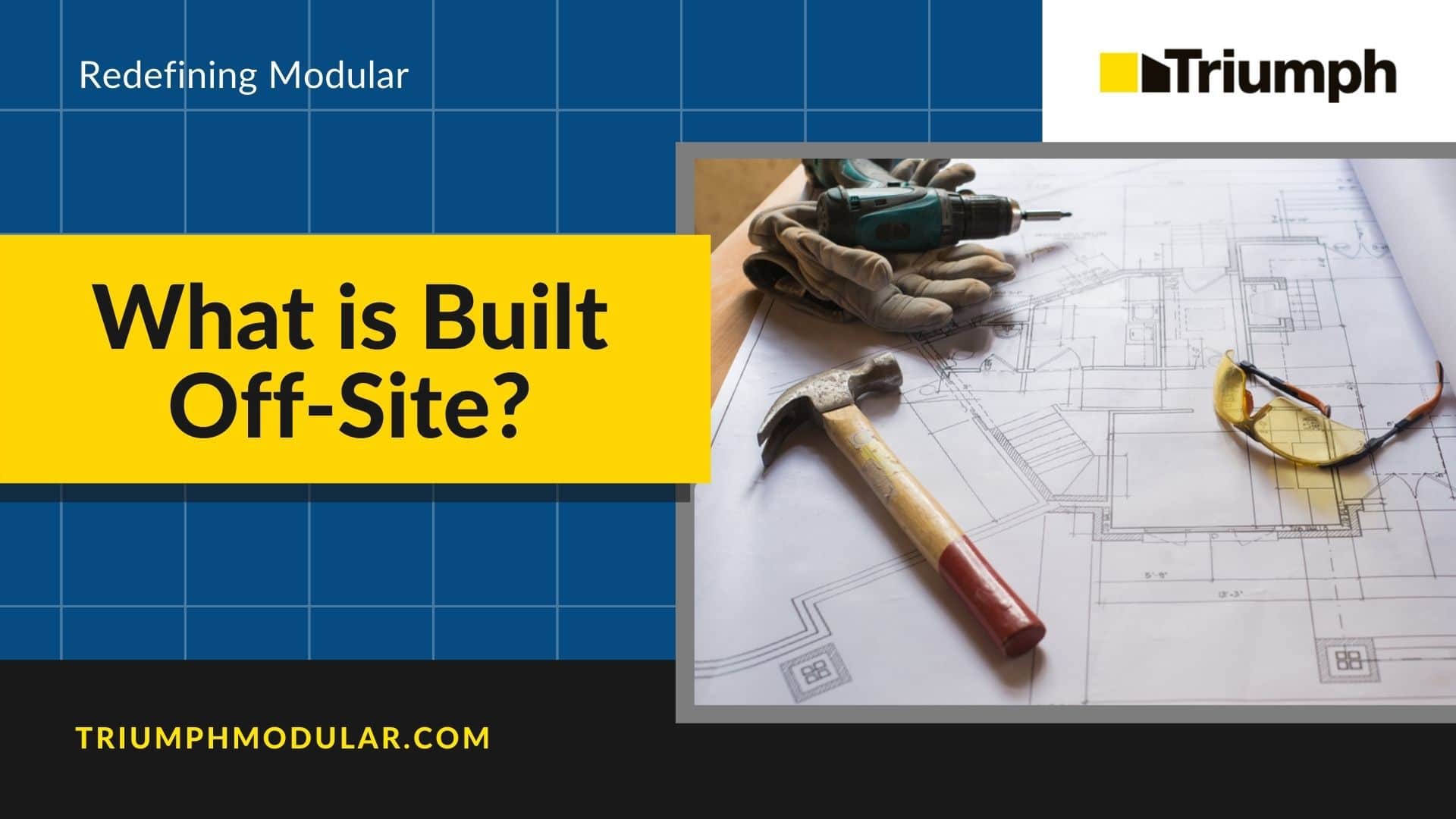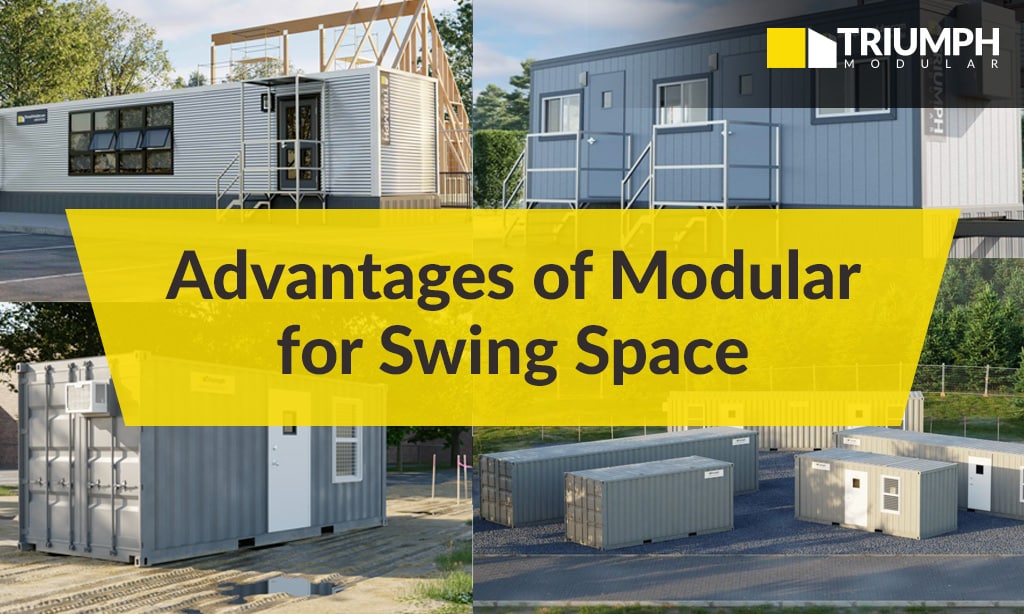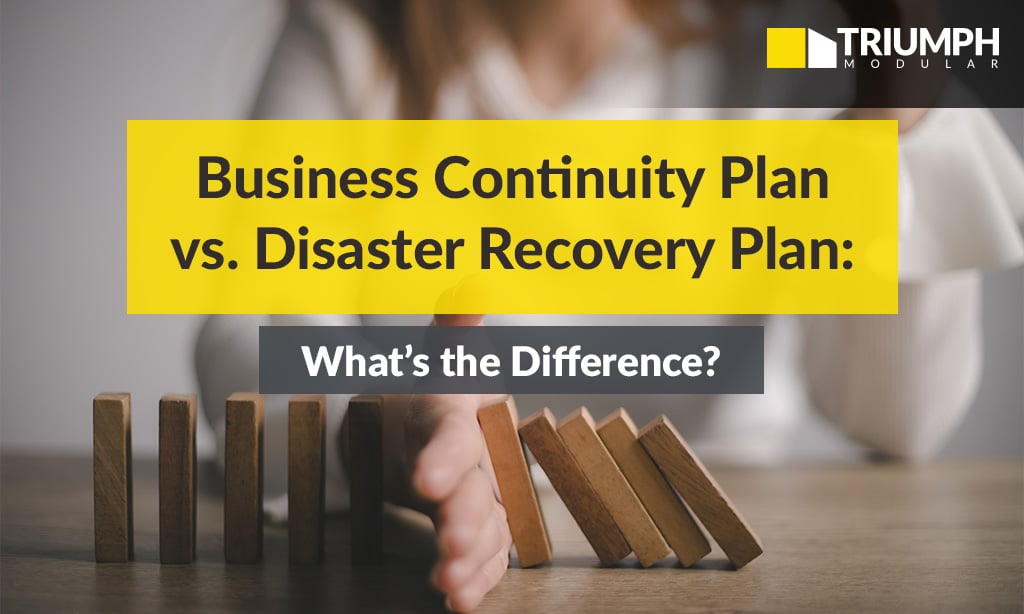The benefits of modular construction have been well-documented.
Whether we’re comparing modular to traditional, outlining the pros and cons, or speaking about specific use cases, such as modular housing, there’s no doubting that modular construction has earned its place as a true alternative to traditional construction.
One benefit that is often seen as a key reason for choosing modular over traditional is speed to occupancy. This is because a sizable portion of the construction process is completed off-site, allowing foundation work to be completed at the same time.
The question is: What is actually built off-site in modular construction?
By answering this question, we aim to provide a clearer understanding of how the modular process works and how it can be a valid alternative to traditional construction methods.
90% of the Build is Done Off-Site
The modular construction process allows for up to 90% of the initial build to be done off-site.
Why is this important?
As we’ve mentioned above, speed to occupancy is a key benefit of choosing modular over traditional. Since most of the build is done off-site, this allows site development and foundations to be completed at the same time as the build. In traditional construction, site development and foundation work need to be completed before construction can even start.
This cuts down project time significantly and allows owners to occupy their buildings 30-50% sooner.
Which Elements Are Built Off-Site?
Now that we know how much is completed off-site, which elements are included in this 90%?
Starting from the beginning, we’re going to provide you with a big-picture outlook on which parts of your modular building are assembled off-site and the typical order that they’re built.
Moment frame
The moment frame is essentially the skeleton of the modular building. Before any of the other elements can be added to the building, the frame must be built.
Moment frames are also often called “box frames”.
Framing for walls, roof, and floor
After the initial skeleton is completed, framing for the interior and exterior walls, the roof, and the floor are all added to the structure. Finishes and sheathing will be added to this framing later on in the process.
Rough mechanical, electrical, and plumbing (MEPs)
Mechanical, electrical, and plumbing elements often get lumped together under one acronym: MEPs. In this stage, rough MEPs are added to the structure.
Doors and windows
Quality doors and windows are obviously a crucial part of any building. This stage sees them added to often highly customized structures. Whitley Manufacturing, for example, installs doors and windows for many building types including classrooms, banks, and multistory buildings.
Interior finishes
This step involves adding various interior finishings to the building. Some of which can include:
- Interior doors
- Wall and ceiling treatments
- Flooring
- Drywall
- Cabinets
MEP finishes
Here, we finish up the rough MEPs we started earlier. This could include the installation of lights and cover plates for electrical or removing caps on drain and water supply lines for plumbing.
Exterior finishes
This stage involves adding exterior finishes to the building, such as roofing or siding.
The polish
Last but not least, the final bells and whistles are added to the modular building. Depending on the use of the building, this stage can include accessories such as:
- Bathroom fixtures
- Paper towel holders
- Mirrors
- Thermostats
- ADA signage
Conclusion
With this newfound knowledge of the elements built off-site in modular construction, the advantages that the modular process brings to the table should be clearer.
In traditional construction, all of these steps need to be completed after the foundation and site work is completed. Owners are stuck waiting to occupy their building and begin operations.
All of these elements completed off-site show just how beneficial modular construction can be. When speed to occupancy is a key factor, modular is the way to go.
Looking for More Information on Modular?
For those seeking additional information on the modular process, or different modular building options, feel free to reach out to us. Our experts are always here to help.




